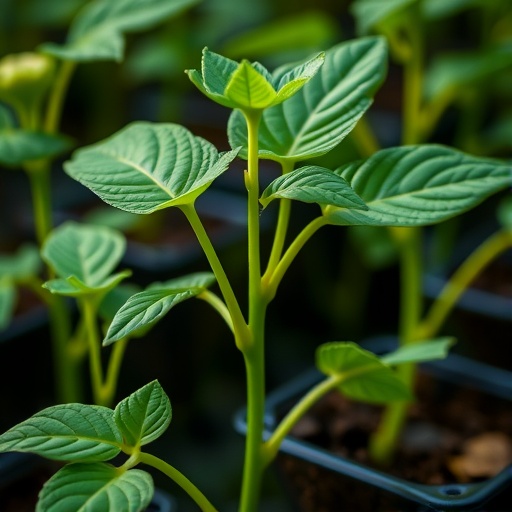For millennia, humanity has harnessed the remarkable ability of bean plants and their botanical relatives to enrich soil fertility, an agricultural secret first intuited by ancient civilizations. Today, cutting-edge research unravels the molecular underpinnings of this natural fertilizer factory, revealing how certain plants form specialized root nodules housing nitrogen-fixing bacteria. This symbiosis enables plants to convert inert atmospheric nitrogen into bioavailable forms essential for growth—an evolutionary trick that modern science now seeks to replicate in major crops through genetic engineering. However, a fundamental question has long persisted: did this intimate plant-bacteria alliance arise once in evolutionary history, or did it emerge independently multiple times?
Nitrogen, abundant as dinitrogen (N₂) gas in the atmosphere, presents a formidable chemical challenge to life. The triple bond linking the two nitrogen atoms forms one of the strongest known covalent bonds in chemistry, second only to carbon monoxide, rendering nitrogen largely inert and inaccessible for direct biological uptake. Primitive life relied on rare natural processes such as lightning or meteorites to produce reactive nitrogen species. It wasn’t until prokaryotic organisms evolved the nitrogenase enzyme complex—an iron- and molybdenum-dependent molecular machine capable of cleaving dinitrogen into ammonia—that this barrier was surmounted. However, nitrogenase’s extreme oxygen sensitivity and high energetic costs have confined this capability predominantly to certain bacteria and archaea.
Enter the leguminous plants, and some of their closest botanical kin, which engage these bacteria in a remarkable mutualistic relationship. The plants develop root nodules—microscopic organs housing symbiotic microbes that fix atmospheric nitrogen in exchange for photosynthates. While ecologists and agronomists have long appreciated this alliance’s environmental and economic benefits, the evolutionary origins and genetic architecture of nodulation remain enigmatic. Earlier classifications, based on morphology, grouped nitrogen-fixing plants haphazardly, but DNA sequencing in recent decades has realigned them into a coherent “nitrogen-fixing clade,” rooting their shared ancestry roughly 110 million years in the past.
Yet, this clade comprises some species that do not nodulate, casting doubt on whether nodulation evolved once with subsequent losses or appeared independently multiple times. Resolving this question carries profound implications, especially for biotechnological endeavors aiming to engineer nitrogen-fixing capabilities into staple cereals like wheat and rice. The discovery of a universal genetic toolkit would suggest a straightforward translational pathway, whereas convergent origins could imply multiple distinct solutions to emulate.
Recent collaborative work spearheaded by crop biologist Christina Finegan, alongside prominent evolutionary botanists Pamela and Douglas Soltis, has illuminated this debate through a genomic lens. By leveraging a comprehensive phylogenetic tree of over 12,000 species in the nitrogen-fixing clade, combined with complete genome analyses of 28 representative species, they focused on the evolutionary histories of specific plant proteins tasked with recognizing bacterial “passwords.” These receptors differentiate nitrogen-fixing symbionts from other microbes, initiating the intricate nodule formation process.
Their analyses revealed at least nine independent gene duplication events related to these receptor proteins, with three correlated with the emergence of nodulation traits. Intriguingly, two duplications appeared within the bean family, while another was ancestral to the rose and pumpkin families. This genetic evidence for multiple independent origins of nodulation converges with phylogenetic patterns, suggesting a predisposition inherited from a common ancestor was repeatedly co-opted and refined in separate lineages by natural selection.
However, unique exceptions were observed in trees hosting Frankia bacteria, such as the common alder and swamp she-oak, which showed no such gene duplications. Their distinct mechanisms for bacterial recognition and nodule formation hint at yet another evolutionary pathway for symbiotic nitrogen fixation, underscoring nature’s versatility and the multiplicity of “roads to Rome” for achieving this complex trait.
At a biochemical level, the initiation of symbiosis is a chemical dialogue. Plants secrete flavonoids into the rhizosphere, signaling nitrogen-fixing bacteria’s presence and enticing them to respond by releasing nod factors—molecular keys recognized by plant receptors. Upon recognition, root hairs deform and curl, engulfing the bacteria into an infection thread that penetrates the root cortex. There, bacteria proliferate, and nodules develop housing them in a low-oxygen environment maintained through specialized plant adaptations like leghemoglobin expression and intracellular water channels, protecting nitrogenase from oxidation while supplying energy.
The evolutionary story is further complicated by the plants’ ancestral symbiosis with mycorrhizal fungi, dating back over 400 million years. Gene duplication events appear to have repurposed fungal interaction genes into bacterial recognition pathways, highlighting the evolutionary plasticity of symbiotic mechanisms. This genomic tinkering laid the groundwork for the nitrogen-fixing clade’s eventual innovations, enabling independent nodulation pathways to emerge through convergent evolution.
From an applied perspective, this multiplicity of evolutionary origins might be a boon rather than a hindrance for bioengineering. The existence of multiple effective genetic routes offers diverse molecular “templates” for creating nitrogen-fixing traits in non-leguminous crops, potentially tailoring solutions for different agricultural contexts or species-specific requirements. It also enables researchers to pinpoint core, indispensable components of the symbiotic machinery by comparing convergently evolved systems.
As environmental pressures mount and the detrimental impacts of synthetic nitrogen fertilizers become increasingly apparent, the imperative to develop sustainable alternatives grows urgent. Unlocking the secrets of root nodule symbiosis through evolutionary and genomic investigations stands as a promising avenue toward reducing agriculture’s ecological footprint while enhancing global food security. This inclusive evolutionary perspective, integrating genetics, biochemistry, and ecology, exemplifies the power of biodiversity-informed science to illuminate nature’s innovations and inspire technological breakthroughs.
Indeed, the story of nitrogen fixation epitomizes evolution’s creative versatility—where ancient molecular interactions forged millennia ago continue to sustain life’s flourishing diversity, even as humans strive to emulate and extend them for a more resilient future.
Subject of Research: Evolution and genetic mechanisms of symbiotic nitrogen fixation in plants
Article Title: Convergent evolution of NFP-facilitated root nodule symbiosis
News Publication Date: 9-Sep-2025
Web References:
https://doi.org/10.1073/pnas.2424902122
References:
- Finegan et al. Proceedings of the National Academy of Sciences, 2025
- Supporting studies on nitrogenase, nod factors, and plant-bacteria interaction cited within the article
Image Credits:
Euan James
Keywords:
Nitrogen, Nitrogen fixing bacteria, Symbiosis, Plant sciences, Microbiology, Hemoglobin, Carnivorous plants, History of life, Chemistry, Oxidation, Plant physiology, Plant signaling




